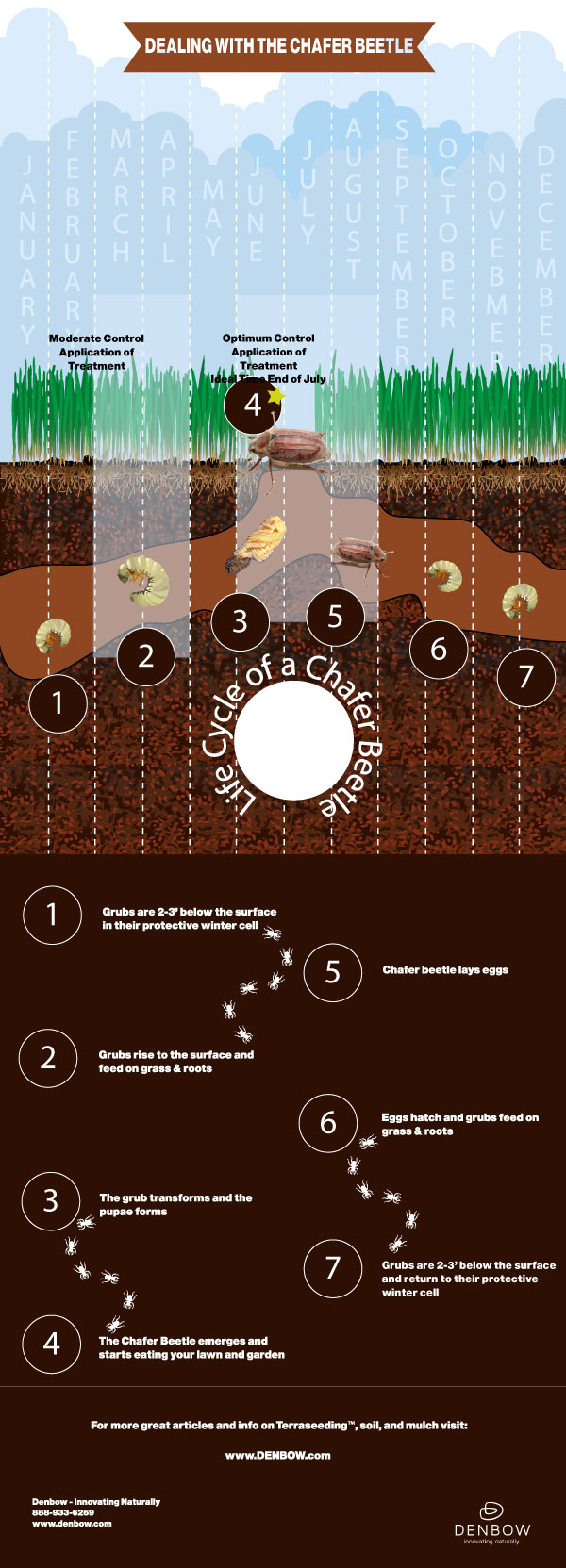Life Cycle of the European Chafer Beetle
The European chafer beetle originated in continental Europe but is now an invasive species found in temperate climates in North America, where they are often called June bugs. The large grubs of the chafer feed on the roots of both wild and cultivated cool-latitude grasses, which has made them a critter-non-grata on North American lawns.
Knowing the beetle’s life cycle can help you defend your lawn against an infestation. Read on to find out more.
The chafer’s life cycle
The chafer’s life cycle is one year. The imago (adult) stage is only 1–2 weeks long, with adult beetles growing to approximately 13–14 millimetres (0.51–0.55 in) in length. The adult chafers emerge from the ground in late spring and mate in large swarms, usually on shrubs and low trees. They are most active on warm, clear nights when the temperature is over 19C (66F). The beetles come out of the ground at about 8:30 pm, mate through the night, and then return to the soil before the sun rises; they may return to the trees to mate again several times over the mating period.
Female chafer beetles lay between 20–40 eggs over their lifespan; the eggs are laid about 5–10 centimetres (2.0–3.9 in) deep in moist soil, and then take 2 weeks to hatch. The grubs hatch by late July. In frost zones, the grubs feed until November and then move deeper into the soil. In frost-free areas, however, the larva feed all winter. Intense feeding occurs from March through May. Then, in early June, the grubs move deeper again, from 5 centimetres to 25 centimetres (2.0–9.8 in), where they form earthen cells and pupate. The pre-pupal stage lasts 2–4 days and the pupal stage lasts 2 weeks. By June, the new beetles begin emerging from the ground.
Beware other critters, too
Not only do the larvae feed on roots, wreaking havoc on lawns, but they attract local fauna like crows, foxes, and raccoons, who dig up the grass in search of the grubs. So, in addition to root damage, homeowners also have to worry about destruction caused by larger creatures.
Why is it important to know about the life cycle of the Chafer beetle?
Knowing the life cycle of the Chafer Beetle helps illustrate is when the beetle is most susceptible to treatment which will help exterminate the pest. The beetle’s most susceptible time is when it is the egg form in late July. Although treatment can help in early times in the season, July is the most optimal time to apply your treatment. It’s also important to note that treatment should not be a one time thing.
In order to ensure the treatment and the extemination of the beetle, it is recommended to apply multiple treatments to your lawn or garden.
We hope you enjoy the article and download the infographic (at the bottom). If you liked it, please feel free to share!

Check out the infographic here



